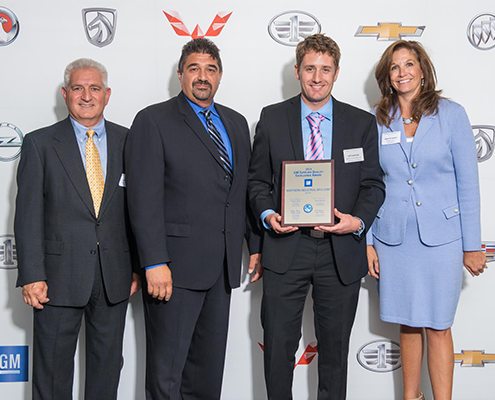Enhancing Auto Assemblies: How US Made Spacers Reduce NVH
In the world of automotive engineering, NVH, which stands for Noise, Vibration, and Harshness, is a critical factor that influences the overall quality and performance of vehicles. NVH is a measure of the sound and vibration characteristics that affect the comfort and driving experience. As automotive manufacturers strive to deliver superior vehicles, reducing NVH levels becomes essential. The challenge lies in addressing the noise and vibrations generated by various components and interactions within the vehicle.
The sources of NVH are varied and complex. They can originate from the engine, road surfaces, wind resistance, and even the vehicle’s own structural design. When these elements are not adequately managed, they result in a less pleasurable driving experience and can even lead to mechanical issues over time. Thus, understanding NVH is vital for anyone involved in automotive design and manufacturing.
To effectively tackle NVH, engineers and designers focus on identifying the sources and implementing solutions that mitigate these effects. One of the most effective strategies is the integration of spacers into the assembly process. Spacers play a crucial role in isolating and dampening vibrations, thereby enhancing the overall performance and comfort of the vehicle. As we delve deeper into this topic, we’ll explore how U.S.-made spacers can be a game-changer in this arena.
The Role of Spacers in Reducing (Noise, Vibration, and Harshness)
Spacers are small yet significant components that serve as buffers between different parts of an assembly. In the context of automotive assemblies, spacers are instrumental in reducing NVH by providing the necessary separation between components that may otherwise cause friction or impact. They help in maintaining the structural integrity of the vehicle while minimizing unwanted noise and vibration.
The primary function of spacers is to absorb and dissipate energy. By doing so, they prevent the transmission of vibrations from one component to another, effectively reducing the overall NVH levels. This is particularly important in areas where metal components are in close proximity, as direct contact can lead to increased noise and wear over time. High-quality spacers, such as those made in the U.S., are designed to withstand harsh conditions and provide consistent performance.
Furthermore, spacers contribute to the longevity of automotive components by reducing the stress and wear that result from constant vibrations. This not only enhances the driving experience but also extends the life of the vehicle. As we explore the advantages of U.S.-made spacers, it becomes evident why they are preferred by many in the automotive industry.
Advantages of Using U.S.-Made Spacers
US made spacers offer several advantages that make them an excellent choice for reducing NVH in automotive assemblies. Firstly, these spacers are manufactured under stringent quality standards, ensuring their reliability and durability. The use of high-grade materials and advanced manufacturing techniques guarantees that they can perform effectively under various conditions.
One of the key benefits of using US made spacers is their precision engineering. They are designed to fit seamlessly into existing assemblies, providing optimal performance without the need for major modifications. This precision ensures that the spacers function as intended, offering maximum NVH reduction while maintaining the structural integrity of the vehicle.
Additionally, sourcing spacers from U.S. manufacturers supports local economies and ensures a supply chain that is both reliable and efficient. This reduces lead times and allows for quicker integration into the production process. For automotive manufacturers, partnering with U.S. spacer producers means access to cutting-edge innovations and the ability to customize products to meet specific needs.
Case Studies: Effective NVH Reduction with U.S.-Made Spacers
The effectiveness of U.S.-made spacers in reducing NVH can be illustrated through several case studies from leading automotive manufacturers. In one notable example, a major U.S. automaker integrated custom-designed spacers into their assembly line to address persistent noise issues in their luxury sedan models. The result was a marked improvement in NVH levels, leading to increased customer satisfaction and positive reviews.
Another case involved a popular SUV brand that faced challenges with road noise and vibrations affecting the driving experience. By opting for U.S.-made spacers, the company was able to significantly reduce these issues. The spacers were tailored to fit key areas of the vehicle, effectively isolating vibrations and enhancing overall comfort. This strategic move not only improved the product but also reinforced the brand’s commitment to quality and innovation.
These case studies highlight the tangible benefits of using US made spacers in automotive assemblies. The ability to customize solutions and achieve substantial NVH reduction makes them an attractive option for manufacturers aiming to deliver superior vehicles.
How to Choose the Right US-Made Spacer for Your Auto Assembly
Selecting the right spacer for an automotive assembly is crucial for achieving optimal NVH reduction. The process involves several key considerations to ensure that the chosen spacers meet the specific needs of the vehicle and its components. One of the first steps is to assess the areas within the assembly where NVH is most prevalent and identify the types of spacers that can address these issues effectively.
Material choice is a significant factor in selecting spacers. Different materials offer varying levels of vibration absorption and durability. For instance, rubber spacers are excellent for dampening vibrations, while metal spacers provide structural support. Understanding the specific requirements of the assembly will guide the selection of the most appropriate material.
Another important aspect is the size and shape of the spacers. They must be designed to fit seamlessly into the assembly without causing interference with other components. Customization may be necessary to achieve the best fit and performance. Working closely with manufacturers to specify dimensions and tolerances ensures that the spacers will function as intended.
Installation Tips for Optimal NVH Reduction
Proper installation of spacers is essential for maximizing their effectiveness in reducing NVH. The first step is to ensure that all surfaces are clean and free of any debris or contaminants that could affect the performance of the spacers. This involves carefully inspecting the components and using appropriate cleaning agents to prepare the surfaces.
During installation, it’s important to follow the manufacturer’s guidelines and specifications. This may include using specific tools or techniques to secure the spacers in place. Ensuring that the spacers are aligned correctly and firmly seated will prevent any movement that could compromise their ability to absorb vibrations.
Regular maintenance and inspection are also vital to maintaining the performance of the spacers. Over time, wear and tear can reduce their effectiveness, so periodic checks should be conducted to identify any issues. Replacing worn or damaged spacers promptly will help maintain optimal NVH levels and extend the life of the vehicle.
Comparing Different Types of Spacers & Their Impact on NVH
The impact of spacers on NVH can vary significantly depending on the type of spacer used. Understanding the differences between various spacer materials and designs is crucial for making informed choices. Common types of spacers include rubber, metal, and composite, each offering unique benefits and drawbacks.
Rubber spacers are known for their excellent vibration damping properties. They are often used in areas where noise reduction is a priority, such as in the suspension system. However, they may not provide the same level of structural support as metal spacers, making them less suitable for certain applications.
Metal spacers, on the other hand, offer superior strength and durability. They are ideal for applications where structural integrity is critical, such as in engine mounts. The trade-off, however, is that they may not absorb vibrations as effectively as softer materials.
Composite spacers combine the best of both worlds, offering a balance of strength and vibration absorption. They are increasingly popular in automotive applications due to their versatility and performance. By comparing these different types of spacers, manufacturers can select the ones that best meet their NVH reduction goals.
Innovations in US-Made Spacer Technology
The field of spacer technology is continually evolving, with new innovations emerging to meet the demands of modern automotive assemblies. One area of advancement is the development of smart spacers, which are designed to adapt to changing conditions and provide real-time feedback on performance. These spacers can adjust their properties in response to temperature changes or load variations, offering unparalleled NVH control.
Another exciting innovation is the use of advanced materials in spacer production. Researchers are exploring the potential of nanomaterials and other cutting-edge substances to enhance the properties of spacers. These materials offer increased strength, durability, and vibration absorption, making them ideal for high-performance applications.
Customization and 3D printing are also transforming the spacer industry. Manufacturers can now produce spacers tailored to specific designs and requirements with unprecedented precision. This allows for greater flexibility and efficiency in the production process, enabling automotive companies to achieve their NVH reduction goals more effectively.
Partnering with US Manufacturers for Quality Spacers
Collaborating with U.S. manufacturers for spacer production offers numerous benefits for automotive companies. These partnerships provide access to high-quality products that are manufactured to meet stringent standards. The assurance of quality and reliability is a significant advantage, ensuring that the spacers will perform as expected.
Working with local manufacturers also offers logistical advantages. Reduced shipping times and costs, along with the ability to quickly address any issues that may arise, make U.S.-based suppliers an attractive option. This proximity fosters collaboration and allows for more effective communication and problem-solving.
Furthermore, partnering with US spacer manufacturers supports domestic industries and contributes to economic growth. By choosing US made spacers, automotive companies can enhance their brand image and demonstrate their commitment to quality and sustainability.
US Made Spacer Manufacturer
US made spacers are an invaluable asset for automotive manufacturers seeking to reduce NVH and improve vehicle performance. Their ability to absorb vibrations and isolate noise makes them a crucial component in modern auto assemblies. By choosing high-quality spacers from reputable U.S. manufacturers, companies can ensure that their vehicles deliver a superior driving experience.
Northern Industrial Manufacturing is the automotive market’s premier US manufacturer of spacers. With a reputation for the closest tolerances, highest product quality, short lead times, process innovations, and technical prowess – we can meet your automotive spacer manufacturing needs, while exceeding your expectations and delivering your parts on time and on budget.
US Spacer Manufacturer: 586.468.2790
Thank you for visiting our blog where we keep you updated on the latest News and Events in automotive manufacturing!
Please check back often to learn what is going on with Northern Industrial Manufacturing, in the world of precision thrust washers, selective shims, and spacers.




